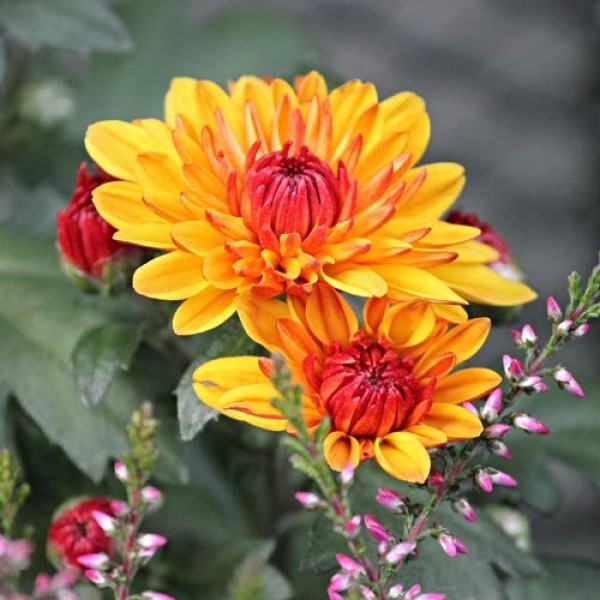
Gardening in October
In the harvested beds you can now remove, clean and store everything that is no longer needed: Tomato and bean poles or the trellises for peas and pumpkins. Remove the root weeds and tufts of grass from the empty beds. Then put a layer of compost or manure on top of it and then a protective layer of leaves, straw or green waste, because soil should never be left exposed for long. Where winter lettuce, spinach, leek, kale or Brussels sprouts are left, you can hoe the weeds once again. In mild areas you can even now try sowing spinach, carrots, lamb`s lettuce, winter onions, winter garlic and Asian salads. However, they may need a foil tunnel to germinate.
In October is a good time to divide up herbaceous perennials and move plants around, e.g. daylilies, bellflowers, bearded iris, yarrow or cranesbill. You may need to check individual plants because the rule of thumb is divide every 3-5 years but some plants, e.g. yarrow prefer more often and others, Peonies, columbine or Turkish poppies don`t like to be disturbed at all. If you have a plant which is failing to flower well, and it has a bald patch in the middle, chances are it needs to be divided. To divide, carefully dig up the entire root ball and avoid damaging the roots. Then shake off excess soil or wash it away with water and cut it into two or three fist-sized pieces and just replant in a new, prepared place.
In addition to dividing, cutting back is also part of perennial care. If you cut back the seed-forming inflorescences regularly, there will usually be a second flower or a good flowering next year. You can also dry the seeds and grow new plants the following year. When cutting back the perennials, remember that every little insect needs a protected winter home, and the hollow stems and dry, curled leaves of perennials are particularly suitable for this. The dried plant parts also provide good winter protection for the plants themselves and also for the soil. It is therefore better to leave your perennials for the winter and cut them back in March. The little helpers are also grateful for a few heaps of wood or garden waste. In this way you protect many beneficial insects and rare species.
October is also the best time to plant peonies. These splendid perennials enjoy a sunny, warm location on about one square meter of space. They also need a loose, nutrient-rich soil enriched with compost or horn meal. As they have sensitive roots, the soil should not be hoed afterwards.
Since the first night frosts can occur in October, you should now bring all non-frost-hardy potted plants indoors or into the greenhouse. This includes chillies, citrus fruits and all sensitive exotic plants. Olive trees still can stay outside in mild areas. They can withstand a few degrees of frost. If you have hardy Mediterranean herbs in the pot, such as thyme, lemon balm or peppermint, you can bury them with the pots in the open beds so that the root balls do not freeze so much.








